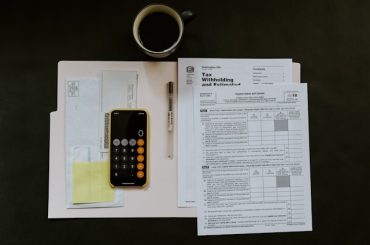Debt recycling is a financial strategy for homeowners who want to pay off their home loans more quickly while simultaneously building a long-term wealth portfolio in a tax-efficient manner. The core idea involves converting the non-tax-deductible debt of a home loan into tax-deductible debt associated with investments.
This process typically starts by using the equity in one’s home (the value difference between the property and the outstanding mortgage amount) to invest in income-producing assets, such as shares, ETFs, or investment properties. The income generated from these investments can then be used to reduce the home loan balance further, effectively speeding up the mortgage repayment process. Over time, this strategy aims to shift the homeowner’s debt from non-deductible to deductible, allowing for potential tax savings and wealth accumulation.
There are several methods for implementing debt recycling, such as recycling in chunks—where large sums are periodically invested—or monthly recycling, where smaller amounts are invested more frequently. These methods potentially offer a more manageable and less stressful investment approach. It’s crucial, however, that the strategy be executed with the right type of loan, one that allows for splits and redraws, and it’s worth noting that no special loan type is explicitly required for debt recycling.
Despite its potential benefits, debt recycling carries risks, especially because it involves investment loans that could fluctuate with market conditions. Considering the potential for investment income to vary and the risk of interest rate increases on variable loans is vital. The strategy requires careful planning and risk assessment, ideally under the guidance of a financial advisor, to ensure it aligns with one’s financial situation and long-term goals.
Types of debt recycling
Debt recycling can be categorized based on the approach taken to leverage and invest. Here are some of the types or methods of debt recycling:
Lump-Sum Debt Recycling
This method involves using a significant amount of equity from your home loan (or a lump sum of savings) to invest in a sizable asset or portfolio. After the investment is made, any returns (such as rental income or dividends) are used to pay down the home loan. Over time, you may repeat this process, shifting your debt from non-deductible (home loan) to deductible (investment loan).
Regular Contribution Debt Recycling
In this approach, rather than waiting to accumulate a large lump sum, you regularly use smaller amounts of equity to invest. This could be monthly or quarterly, depending on your cash flow. This method is akin to dollar-cost averaging in investments and may be less risky regarding market timing. The returns from these investments are then used to pay down the home loan.
Direct Debt Swap
This involves directly replacing non-deductible debt with deductible debt. For example, if you have a significant amount of non-deductible debt (like a personal loan or a portion of your mortgage that is not generating any income), you could pay it off or reduce it by borrowing against the equity in your home and then using those funds to invest in income-producing assets. This strategy effectively converts the nature of your debt from non-deductible to deductible.
Hybrid Debt Recycling
This method combines various elements of debt-recycling strategies. For instance, you might start with a lump-sum investment and then continue with regular contributions. Alternatively, you might use a combination of direct debt swap and regular contributions to shift your debt from non-deductible to deductible over time continuously.
Considerations for Each Type:
- Risk Tolerance: Your risk tolerance will significantly influence your debt recycling strategy. Regular contributions might suit those who prefer a more conservative approach, while lump-sum investments might appeal to those willing to take on more risk for potentially higher returns.
- Market Conditions: The state of investment markets can also play a role. Lump-sum investments may be more appealing in a rising market, while regular contributions can help mitigate the risk of market volatility.
- Financial Goals: Your long-term financial goals, including your investment horizon and desired income streams, will help determine the most appropriate strategy.
- Tax Implications: Different strategies may have varying tax implications, especially concerning interest deductibility. Consulting with a tax professional is crucial to maximizing the benefits of debt recycling within the legal framework.
Tailoring the debt recycling strategy to your financial situation, goals, and risk tolerance is essential. Consulting with financial and tax professionals can provide personalized advice and help navigate the complexities of each approach.
Advantages of debt recycling
Debt recycling offers several advantages that can contribute to financial growth and stability:
- Accelerated Mortgage Repayment: By utilizing the income generated from investments, debt recycling can help homeowners pay off their home loans faster than they would by merely adhering to the standard repayment schedule. This is achieved by redirecting investment income towards the mortgage, thereby reducing the principal amount owed and potentially shortening the loan term.
- Tax Efficiency: One key benefit of debt recycling is the potential tax advantages it offers. By converting non-deductible debt (like a home loan) into tax-deductible investment debt, homeowners can reduce their taxable income through the interest expenses incurred on the investment loan. This can lead to significant tax savings over time, making the strategy particularly appealing to those in higher tax brackets.
- Wealth Building and Diversification: Debt recycling can facilitate the earlier accumulation of a diversified investment portfolio. Instead of waiting until the mortgage is fully paid off to start investing, homeowners can begin building their investment portfolio concurrently. This allows for wealth accumulation and helps diversify investment risks across different asset classes, such as shares, ETFs, or other properties.
- Potential for Passive Income: Over time, the investments made through debt recycling can generate passive income streams, such as dividends from stocks or rental income from investment properties. This income can further contribute to mortgage repayments, investment in additional assets, or simply enhance the homeowner’s cash flow and financial security.
It’s important to note that while debt recycling offers these advantages, it also involves certain risks and complexities. The success of this strategy depends on various factors, including market conditions, the types of investments chosen, and the individual’s financial circumstances. Therefore, it’s advisable to consult with a financial advisor to understand how debt recycling fits your overall financial plan and carefully consider the associated risks.
Examples of Debt Recycling
Debt recycling can be implemented in various ways, depending on an individual’s financial situation, risk tolerance, and investment goals. Here are a couple of illustrative examples to demonstrate how debt recycling might work in practice:
Example 1: Monthly Debt Recycling
A homeowner has built up significant equity in their home and decides to establish a separate loan account against this equity. Each month, they use some of this borrowed money to invest in a diversified portfolio of shares or exchange-traded funds (ETFs). Simultaneously, they continue to repay their primary home loan as usual. The monthly investments have the potential for capital growth and generate dividend income, which can be used to pay down the home loan or reinvest further. Over time, the goal is to replace the non-deductible home loan debt with tax-deductible investment debt, leveraging the tax deductibility of the interest on the investment loan.
Example 2: Debt Recycling in Chunks
Another approach is to recycle debt in larger chunks. Here, a homeowner might wait until they’ve accumulated a significant amount of savings or equity, then redraw this amount from their home loan and immediately invest it into income-generating assets, such as a rental property or a portfolio of stocks. The income from these investments can be used to pay down the home loan more quickly. Meanwhile, the homeowner might take advantage of any tax deductions available on the interest of the investment loan. This process can be repeated multiple times, shifting the debt from home to investment loans.










